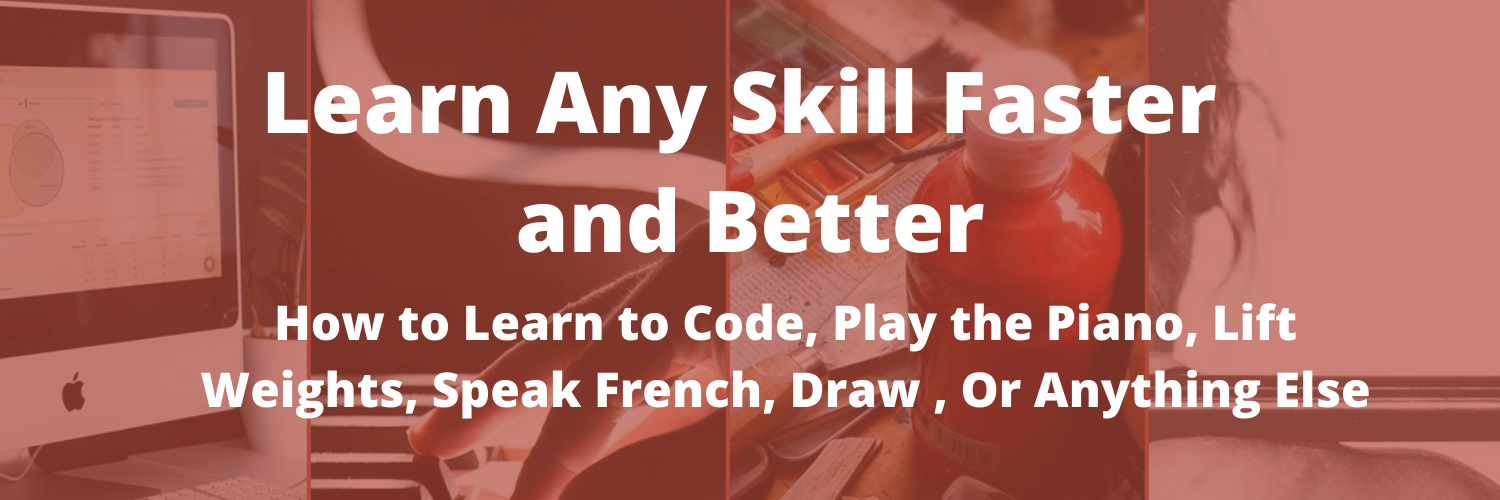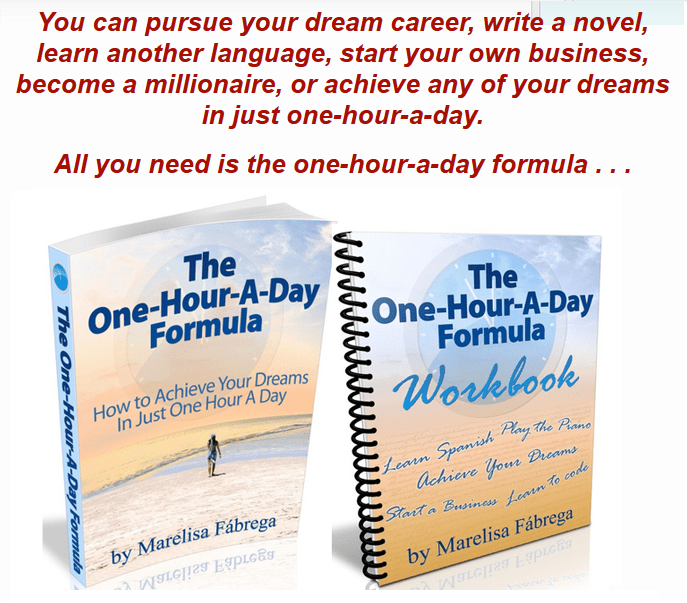
You need unwavering commitment to achieve your goals.
A while back I wrote a post on Ten Must-Watch TED Talks for lifelong learners. One of the talks that I highlighted in that post was by Connor Grooms. Grooms is a young man who learned to speak Spanish in a month.
In his talk, Grooms explains that he had tried to learn Spanish a few times before and had failed. What finally led him to succeed in achieving his goal of learning Spanish was commitment. As Grooms explains:
“No learning methodology or strategy in the world will work for you, unless learning the skill that you’ve decided to acquire is nonnegotiable. You must be absolutely committed.”
This same principle holds true for any goal you want to achieve, whether it’s learning a new skill, running a marathon, becoming a lawyer, writing your novel, or anything else. Therefore, in order to increase your odds of achieving any important goal that you’ve set for yourself, you have to boost your commitment to reach that goal.
In this post I’m going to share with you how to increase your goal commitment so that you can achieve your most important goals.
The Four Elements of Goal Commitment
In “Commit to Win: How to Harness the Four Elements of Commitment to Achieve Your Goals”, Heidi Reeder, Ph.D., unpacks over forty years of research by psychologists and economists to show that the key to reaching any goal is commitment.
Reeder indicates that there are four variables that drive commitment. Here are the four variables:
- Treasures: the benefits we get from working toward a goal.
- Troubles: the difficulties we have to deal with as we strive to achieve our goal.
- Contributions: the time, money, and effort we invest in the goal.
- Choices: the number of good alternatives we have.
By manipulating these four variables you can dial your commitment up or down. That is, you can increase your commitment to those things that will serve you well or decrease your commitment to those things that aren’t serving you well.
In our case, we’re trying to increase our commitment to achieve an important goal. For illustrative purposes, we’re going to choose learning a new skill as the goal that you want to achieve. Let’s take a look at how you would manipulate the four variables in order to increase your goal commitment.
Treasures
Treasures are all those positive outcomes and valuable things that you’ll obtain from a commitment. When it comes to learning a new skill, it’s all the benefits and positive results that you’ll acquire if you learn the skill. It’s all the reasons “why” you’ve chosen to learn the skill.
When you’re making a list of all the “treasures” that you’ll acquire by learning the skill, keep in mind that your treasures can be innate or extrinsic rewards. Take a look at the following:
- Treasures can be innate rewards, like learning a new skill because it will make your life more meaningful, give you a sense of accomplishment, or because you have fun learning the skill.
- They can also include the extrinsic results of attaining your goal, like earning a higher salary, winning a prize, or gaining status.
The more treasures you have, the higher your commitment. Therefore, to increase your commitment, increase the treasures—or the benefits—that you’ll receive by learning your chosen skill.
Troubles
Any goal you want to achieve, including the goal of learning a new skill, will be accompanied by troubles. Specifically, troubles include costs and obstacles. Let’s take a look at each of these.
Costs
Costs are the resources that you’ll need to devote to achieving your goal. These resources include time, money, energy, and so on.
Some costs are simply the “cost of admission” of learning your skill. For example, you’ll have to devote time and attention to learning the skill. That can’t be avoided. In addition, there may be some tools and equipment that you’ll need to buy, as well as learning material you’ll need to invest in.
Obstacles
No journey to achieving any worthwhile goal is obstacle-free. Accept that obstacles are simply part of the process, and ask yourself the following questions:
- What obstacles will I potentially face as I strive to learn this skill?
- What resources will I need to overcome these obstacles?
If you come across an obstacle when you’re learning your skill—for example, there may be a concept that you have a lot of difficulty understanding—you need to brainstorm ways to overcome that obstacle.
Treasures – Troubles = Level of Satisfaction
When it comes to treasures and troubles, subtracting one from the other gives you your level of satisfaction. The higher your level of satisfaction, the more likely you are to commit to your goal.
Therefore, to increase your goal commitment, look for ways to increase your treasures and reduce your troubles.
Contributions
The contributions variable takes into account the fact that the more that you invest in something—in terms of your time, your energy, your creativity, your money, and so on—the more committed you’ll be to it.
This variable tells you to ask the following question: “How much have you already devoted to this activity?” After all, when you’ve already committed a lot of resources to something, it makes it more likely that you’ll follow through with it.
Contributions At the Start
When you make a decision to learn a new skill, you’re more likely to commit to the skill once you’ve made an initial investment in it. That is, buy the tools and learning material that you’ll need to learn your skill and you’ll increase your goal commitment.
Contributions As You Move Forward
Once you’ve been working on learning your skill for a while, the fact that you’ve already invested time and energy in learning the skill will help boost your commitment to keep going. If you need a commitment boost, remind yourself of all the effort you’ve already made to learn the skill.
In addition, if you want to build your resolve to learning your skill, invest money in it on a regular basis. For example, if you want to learn to paint, you can invest initially in the tools that you’ll need to get started. Then, each month you can buy some new supplies to help keep your commitment high.
Level of Satisfaction + Contributions
We already said before that the higher your level of satisfaction (treasures – troubles) the more committed you’ll be to learn your chosen skill. Now, we’re adding contributions to the equation.
The more contributions you make to learning your skill, the more committed you’ll be to your goal of learning it.
Choices
Suppose that every day, for one hour a day, you’re locked in a room. The only items in the room are those that you’ll need to learn your chosen skill. What do you think will happen? You’ll probably get to work on learning your skill. After all, for that hour, there’s nothing else you can do.
The opposite is also true. Suppose that, once again, you’re locked in a room for one hour a day. But this time, the room contains all of the following:
- A state-of-the-art television set.
- The material that you’ll need to learn your chosen skill.
- Books.
- The materials you would need to learn several other skills.
- Many other shiny, interesting objects.
What do you think you’d do now? Would you get to work on learning your skill? It’s not very likely that you would, because you have so many other choices.
The more choices you have–or the more choices that you perceive you have–the less likely you are to commit to your initial choice. And the less choices you have, the more likely you are to commit. Therefore, to increase your commitment, decrease your choices.
The Commitment Equation
I’ve already shared with you most of the Commitment Equation:
Level of Satisfaction + Contributions
Now, here’s the equation in its entirety:
Level of Satisfaction + Contributions – Choices
By manipulating the four variables in the ways that I shared with you above, you can increase your commitment to your goal.
Conclusion
What goal have you been trying to commit to? Boost your goal commitment by manipulating the four variables of commitment and see how it goes. And if your goal is to learn a new skill, get my course on learning new skills faster than you ever thought possible:
 Live your best life by committing to your goals.
Live your best life by committing to your goals.




- 30 Tips for Learning Any Skill Faster
- A Mantra That Will Change Your Life: Everything is Learnable
- The Autodidact Manifesto – A Manifesto for Self-Learners
- How You Sabotage Your Ability to Learn (And How to Stop)





 Marelisa Fabrega is a lawyer and entrepreneur. She holds a Bachelor of Science in Business Administration from Georgetown University in Washington, D.C., as well as a Juris Doctor from the Georgetown University Law Center. You can learn more about her
Marelisa Fabrega is a lawyer and entrepreneur. She holds a Bachelor of Science in Business Administration from Georgetown University in Washington, D.C., as well as a Juris Doctor from the Georgetown University Law Center. You can learn more about her 





